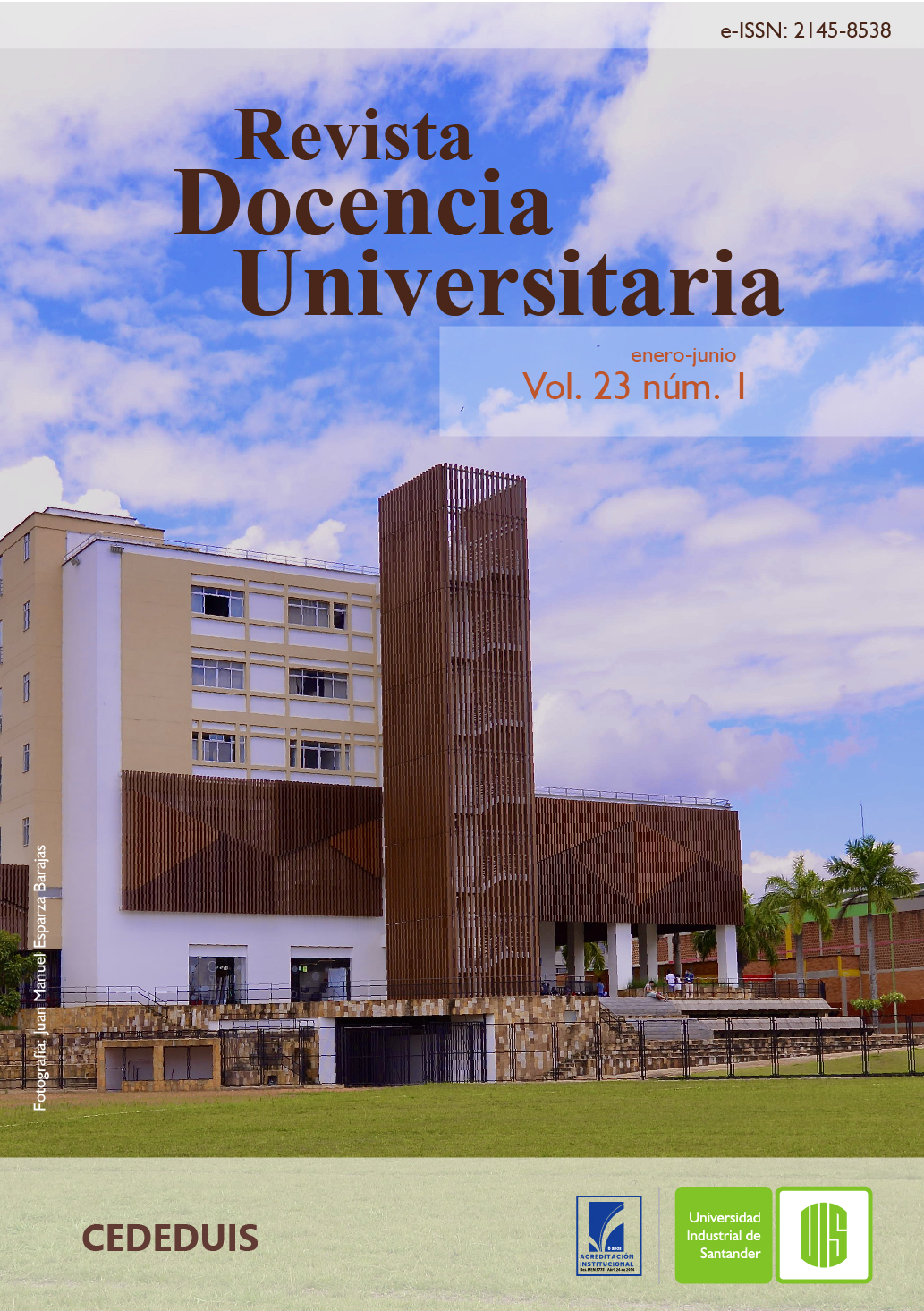Published 2022-07-15
Keywords
- realidad aumentada,
- geometría,
- enseñanza-aprendizaje,
- educación tecnológica,
- modelación de figuras en 3D
How to Cite
Copyright (c) 2022 Revista Docencia Universitaria

This work is licensed under a Creative Commons Attribution 4.0 International License.
Abstract
This study is intended to evaluate the effects of the use of digital tools toward an augmented reality application called Geometry RA, on seventh graders from Tecnico Dámaso Zapata High School. In adition, it seeks to justify a pedagogical strategy that helps in the reasoning and interpretation of problem situations based on the modeling of three-dimensional figures. Thus, the study was applied in two groups: one experimental and one control, where the first of them embraced the methodology consisting of the study and modeling of geometric figures in 3D, magnified by RA Geometry, while the group of control was exposed to a traditional teaching. At the beginning and end of the experiment, both groups were evaluated through a written test consisting of a Pre Test-Post Test and a survey that validated the implementation of the proposal. The results suggest that the use of augmented reality in the teaching-learning processes had effects on the strengthening of interpretive competences that led to a better reasoning of geometric problem situations, the improvement of the analysis processes and the incidence of it in the change of attitude towards new learning techniques.
Downloads
References
- Azuma, R. (1997). A survey of augmented reality. Presence: Teleoperators and Virtual Environments, 6(4), 355-385. https://doi.org/10.1162/pres.1997.6.4.355
- Azuma, R. (1999). The challenge of making augmented reality work outdoors. En Y. Ohta y H. Tamura (ed.), Mixed Reality: Merging Real and Virtual Worlds (pp. 379-390). Springer
- Barrios-Soto, L. M. y Delgado-González, M. (2021). Efectos de los recursos tecnológicos en el aprendizaje de las matemáticas. Revista Digital: Matemática, Educación e Internet, 22(1), 1-14. https://doi.org/10.18845/rdmei.v22i1.5731
- Barroso, K. (2022). La realidad aumentada en el proceso de enseñanza-aprendizaje. Tecnology Rain Journal, 1(2), 1-15. https://doi.org/10.55204/trj.v1i2.e6
- Casas Angarita, J., Repullo Labrador, J. R. y Donado Campos, J. (2003). La encuesta como técnica de investigación. Elaboración de cuestionarios y tratamiento estadístico de los datos (I). Atención Primaria, 31(8), 527-538. https://doi.org/10.1016/S0212-6567(03)70728-8
- Collazos Delgado, A. A., González Rincón, Y. M. y Monroy Fonseca, M. N. (2023). Desarrollo del pensamiento geométrico a través de una secuencia didáctica apoyada con el uso de la herramienta GeoGebra. Ciencia Latina Revista Científica Multidisciplinar, 7(1), 3433-3459. https://doi.org/10.37811/cl_rcm.v7i1.4664
- Gaona, J. (2018). Integrar tecnología en la enseñanza-aprendizaje de las matemáticas, factores clave. Revista Gestión de la Innovación en Educación Superior, 3, 75-93. https://orcid.org/0000-0001-6367-529X
- Hernández Sampieri, R. Fernández Collado, C., y Baptista Lucio, P. (2006). Metodología de la investigación cualitativa. En Metodología de la investigación (pp. 792-795). Interamericana Editores, Mc Graw Hill
- Milgram, P y Kishino, F (1994). A Taxonomy of Mixed Reality Visual Displays. EIECE Transactions on Information Systems, 77-D(12). https://www.researchgate.net/publication/231514051_A_Taxonomy_of_Mixed_Reality_Visual_Displays
- Peña-Acuña, B., y Martínez-Sala, A. M. (2022). Cuentos de Realidad Aumentada para el aprendizaje de la lengua. Porta Linguarum Revista Interuniversitaria de Didáctica de las Lenguas Extranjeras, (37), 291-306. https://doi.org/10.30827/portalin.vi37.20938
- Pérez-González, F., García-Ríos, R., y Talaya-González, I. (2003). Estilos de aprendizaje y habilidades de gestión del tiempo académico en Educación Secundaria. Revista Portuguesa de Educação, 16(1), 59-74
- Pimentel Elbert, M. J., Zambrano Mendoza, B. M., Mazzini Aguirre, K. A. y Villamar Cárdenas, M. A. (2023). Realidad virtual, realidad aumentada y realidad extendida en la educación. RECIMUNDO, 7(2), 74-88. https://doi.org/10.26820/recimundo/7.(2).jun.2023.74-88
- Soriano-Sánchez, J. G. y Jiménez-Vázquez, D. (2023). Las ventajas del uso de la realidad aumentada como recurso docente pedagógico. Revista Innova Educación, 5(2), 7-28. https://doi.org/10.35622/
- Yandún Cartagena, C. A., Chiles Arévalo, G. V. y Moreno Yandún, C. E. (2023). La innovación en el aula a través de la realidad aumentada (RA) en la asignatura de Biología: Innovation in the classroom through augmented reality (AR) in the subject of Biology. LATAM Revista Latinoamericana de Ciencias Sociales y Humanidades, 4(4), 71-82. https://doi.org/10.56712/latam.v4i4.1199

